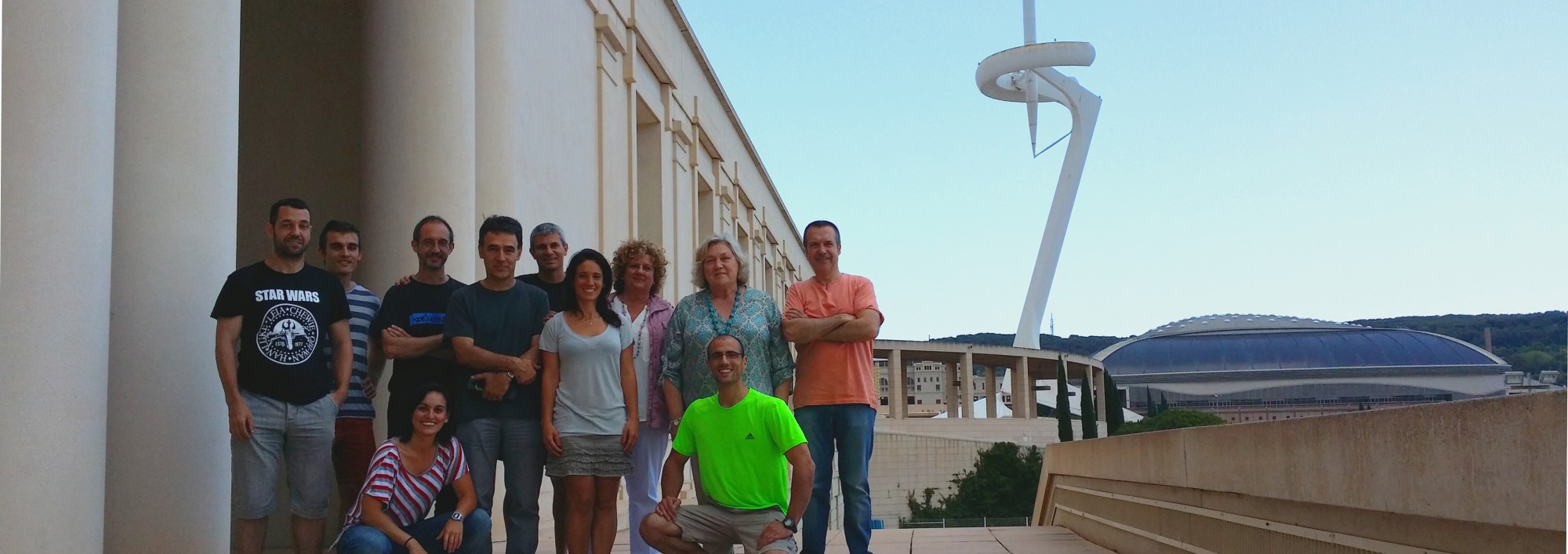At GRAFAiS we have defined seven lines of research and we have established synergies between each other and the members of the group. Our lines of research have as a common element: the movement of the human body and its health throughout life. Thus, our lines of research are:
The development of fundamental motor skills
We study how people acquire, perform and adapt basic skills such as walking, running, balancing, jumping and throwing. The objectives of this line of research are:
- Describe the processes of rebalancing when the senses are altered according to age and level sports
- Establish the motor patterns (segmental and muscular coordination) that allow to rebalance when the senses are altered depending on age and athletic level.
- Initiate a research project in relation to rebalancing processes in children with Developmental Coordination Disorder (DCD).
- Description of the effects produced by the bimanual subjection of a light object in the patterns kinematic, kinetic and electromyographic during standing in children of typical development and children with spastic diplegia.
- Description of the effects produced by the bimanual subjection of a light object in the patterns kinematic, kinetic and electromyographic during gait in children of typical development and children with spastic diplegia.
- Know the changes in the kinematic and kinetic pattern of the race produced by footwear minimalist.
- Describe patterns of muscle activation during running with minimalist footwear.
Motor learning and coordinatio
We study the interaction between perception and action that allows people to learn new coordination patterns and improve those already learned. We also focus on the study of the effect of physical exercise on learning. The objectives of this line of research are:
- Define the changes produced by age in intra-subject variability when performing a sports-motor skill.
- To establish the possible positive effects of the intense exercise of resistance in the learning of a perceptual-motor task.
- To know the affectation in the perceptual-motor learning in children who realize an intense exercise of resistance.
Control and assessment of activity and muscle fatigue
We study muscle fatigue in sports activities considering neuronal, hemodynamic and metabolic aspects. Muscle damage, recovery and injury prevention, as well as muscle quality, are studied with biomarkers as indicators. The objectives of this line of research are:
- Have objective and effective markers of central and peripheral neuromuscular fatigue during braking actions and giving gas to a speed motorcycle.
- Optimization of a protocol for assessing neuromuscular fatigue of the forearm in motorcyclists of speed
- Proposal of different training models for the specific strength of the muscles of the
the forearm in speed bikers. - Implementation of monitoring systems for neuromuscular fatigue during piloting in real situation.
- Parameterize blood markers of muscular work.
- Determine the effect of effort on muscle damage produced in sports events specific.
- Design a series of biochemical parameters to determine the degree of fatigue, overtraining muscle and avoid possible muscle injury.
Assessment and training of muscle strength
Improvements in movement imply improvements in physical condition and, in particular, in muscular strength. We study and develop objective methods to train and assess strength, including the design of equipment and the use of complex and non-linear tools to verify the effectiveness of the training implemented. The objectives of this line of research are:
- Optimization of the muscular profile of the jumping capacity in masculine and feminine artistic gymnastics.
- Relate different models and assessment systems of the maximum strength of the lower body with the performance in competition of different sports modalities, including alpine skiing.
Physical activity prescription programs
The prescription of physical activity will depend on the particular situation and their needs, knowing that the muscles, as a trigger for movement, activate a multitude of systems that will comprehensively improve the health of the active person. The objectives of this line of research are:
- Know the predictive relationship between functional gait and different physical and general variables in old people.
- Evaluate the static and dynamic balance in healthy older people in rural areas.
- Determine the levels of physical activity of special populations and the relationship with their condition physical: older people, with pathologies of the nervous system and/or back pathologies.
First aid and out-of-hospital emergencies in the field of physical activity and sports
The objectives of this line of research are:
- To increase the efficiency of the tools and procedures for quality actions in emergency professionals.
- Iimprove prevention and action procedures in case of sudden death and other out-of-hospital emergencies, especially in sports and physical activity situations
- Promote the learning of first aid procedures in exercise professionals.
Nutrition and physical activity and their interaction with well-being and sustainability
We study the effect of diet, physical activity, and other lifestyle habits on nutritional status (including body composition and muscle function) and well-being in different populations. We also study the influence of the environment on the dietary and physical activity habits of the population. All this through new tools and techniques (big data, nutrigenetics, nutrigenomics, chronobiology) that allow us to understand the relationships between diet, physical activity and the place where we live. We also develop tools to assess nutritional status and implement dietary changes through nutrition education and gastronomy. The objectives of this line of research are:
- Improvements produced by various nutrients in physical activity and health.
- Nutrition and changes caused by age.
- Food composition databases and other dietary-nutritional assessment tools
